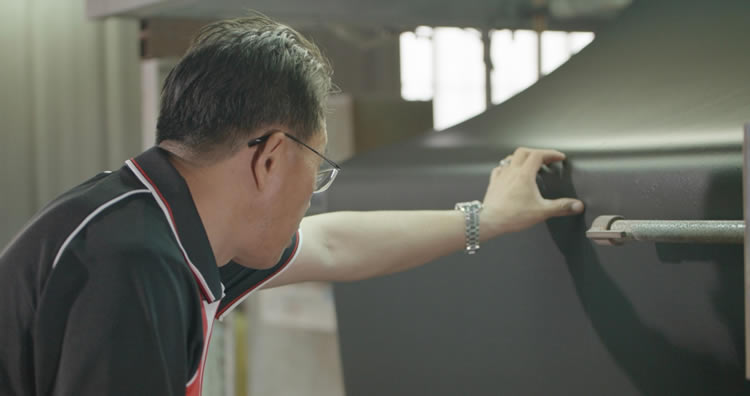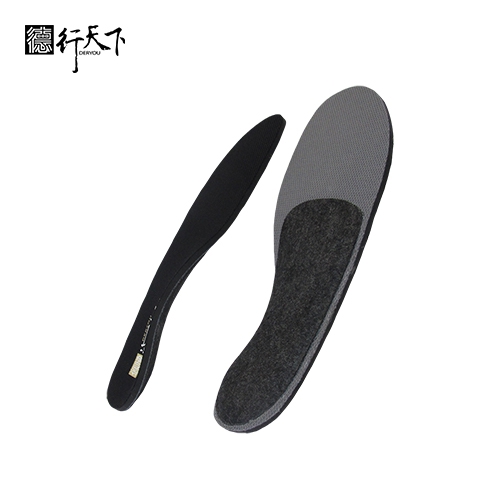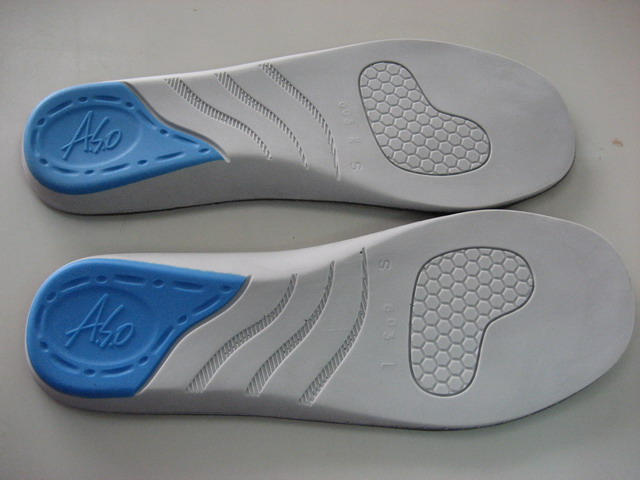Introduction – Company Background
GuangXin Industrial Co., Ltd. is a specialized manufacturer dedicated to the development and production of high-quality insoles.
With a strong foundation in material science and footwear ergonomics, we serve as a trusted partner for global brands seeking reliable insole solutions that combine comfort, functionality, and design.
With years of experience in insole production and OEM/ODM services, GuangXin has successfully supported a wide range of clients across various industries—including sportswear, health & wellness, orthopedic care, and daily footwear.
From initial prototyping to mass production, we provide comprehensive support tailored to each client’s market and application needs.
At GuangXin, we are committed to quality, innovation, and sustainable development. Every insole we produce reflects our dedication to precision craftsmanship, forward-thinking design, and ESG-driven practices.
By integrating eco-friendly materials, clean production processes, and responsible sourcing, we help our partners meet both market demand and environmental goals.


Core Strengths in Insole Manufacturing
At GuangXin Industrial, our core strength lies in our deep expertise and versatility in insole and pillow manufacturing. We specialize in working with a wide range of materials, including PU (polyurethane), natural latex, and advanced graphene composites, to develop insoles and pillows that meet diverse performance, comfort, and health-support needs.
Whether it's cushioning, support, breathability, or antibacterial function, we tailor material selection to the exact requirements of each project-whether for foot wellness or ergonomic sleep products.
We provide end-to-end manufacturing capabilities under one roof—covering every stage from material sourcing and foaming, to precision molding, lamination, cutting, sewing, and strict quality control. This full-process control not only ensures product consistency and durability, but also allows for faster lead times and better customization flexibility.
With our flexible production capacity, we accommodate both small batch custom orders and high-volume mass production with equal efficiency. Whether you're a startup launching your first insole or pillow line, or a global brand scaling up to meet market demand, GuangXin is equipped to deliver reliable OEM/ODM solutions that grow with your business.



Customization & OEM/ODM Flexibility
GuangXin offers exceptional flexibility in customization and OEM/ODM services, empowering our partners to create insole products that truly align with their brand identity and target market. We develop insoles tailored to specific foot shapes, end-user needs, and regional market preferences, ensuring optimal fit and functionality.
Our team supports comprehensive branding solutions, including logo printing, custom packaging, and product integration support for marketing campaigns. Whether you're launching a new product line or upgrading an existing one, we help your vision come to life with attention to detail and consistent brand presentation.
With fast prototyping services and efficient lead times, GuangXin helps reduce your time-to-market and respond quickly to evolving trends or seasonal demands. From concept to final production, we offer agile support that keeps you ahead of the competition.
Quality Assurance & Certifications
Quality is at the heart of everything we do. GuangXin implements a rigorous quality control system at every stage of production—ensuring that each insole meets the highest standards of consistency, comfort, and durability.
We provide a variety of in-house and third-party testing options, including antibacterial performance, odor control, durability testing, and eco-safety verification, to meet the specific needs of our clients and markets.
Our products are fully compliant with international safety and environmental standards, such as REACH, RoHS, and other applicable export regulations. This ensures seamless entry into global markets while supporting your ESG and product safety commitments.
ESG-Oriented Sustainable Production
At GuangXin Industrial, we are committed to integrating ESG (Environmental, Social, and Governance) values into every step of our manufacturing process. We actively pursue eco-conscious practices by utilizing eco-friendly materials and adopting low-carbon production methods to reduce environmental impact.
To support circular economy goals, we offer recycled and upcycled material options, including innovative applications such as recycled glass and repurposed LCD panel glass. These materials are processed using advanced techniques to retain performance while reducing waste—contributing to a more sustainable supply chain.
We also work closely with our partners to support their ESG compliance and sustainability reporting needs, providing documentation, traceability, and material data upon request. Whether you're aiming to meet corporate sustainability targets or align with global green regulations, GuangXin is your trusted manufacturing ally in building a better, greener future.
Let’s Build Your Next Insole Success Together
Looking for a reliable insole manufacturing partner that understands customization, quality, and flexibility? GuangXin Industrial Co., Ltd. specializes in high-performance insole production, offering tailored solutions for brands across the globe. Whether you're launching a new insole collection or expanding your existing product line, we provide OEM/ODM services built around your unique design and performance goals.
From small-batch custom orders to full-scale mass production, our flexible insole manufacturing capabilities adapt to your business needs. With expertise in PU, latex, and graphene insole materials, we turn ideas into functional, comfortable, and market-ready insoles that deliver value.
Contact us today to discuss your next insole project. Let GuangXin help you create custom insoles that stand out, perform better, and reflect your brand’s commitment to comfort, quality, and sustainability.
🔗 Learn more or get in touch:
🌐 Website: https://www.deryou-tw.com/
📧 Email: shela.a9119@msa.hinet.net
📘 Facebook: facebook.com/deryou.tw
📷 Instagram: instagram.com/deryou.tw
Graphene-infused pillow ODM factory Taiwan
Are you looking for a trusted and experienced manufacturing partner that can bring your comfort-focused product ideas to life? GuangXin Industrial Co., Ltd. is your ideal OEM/ODM supplier, specializing in insole production, pillow manufacturing, and advanced graphene product design.
With decades of experience in insole OEM/ODM, we provide full-service manufacturing—from PU and latex to cutting-edge graphene-infused insoles—customized to meet your performance, support, and breathability requirements. Our production process is vertically integrated, covering everything from material sourcing and foaming to molding, cutting, and strict quality control.Taiwan orthopedic insole OEM manufacturing site
Beyond insoles, GuangXin also offers pillow OEM/ODM services with a focus on ergonomic comfort and functional innovation. Whether you need memory foam, latex, or smart material integration for neck and sleep support, we deliver tailor-made solutions that reflect your brand’s values.
We are especially proud to lead the way in ESG-driven insole development. Through the use of recycled materials—such as repurposed LCD glass—and low-carbon production processes, we help our partners meet sustainability goals without compromising product quality. Our ESG insole solutions are designed not only for comfort but also for compliance with global environmental standards.Vietnam custom insole OEM supplier
At GuangXin, we don’t just manufacture products—we create long-term value for your brand. Whether you're developing your first product line or scaling up globally, our flexible production capabilities and collaborative approach will help you go further, faster.Indonesia athletic insole OEM supplier
📩 Contact us today to learn how our insole OEM, pillow ODM, and graphene product design services can elevate your product offering—while aligning with the sustainability expectations of modern consumers.China graphene sports insole ODM
A new study by UC San Diego researchers reveals unique inhibitory neurons in the human forebrain, offering insights that may improve models of brain function and disease, and showing that certain neurons share common lineages, a discovery with significant implications for understanding brain diseases. Researchers unveil new insights into human forebrain development A team of scientists from the University of California San Diego School of Medicine conducted a study that provides a new understanding of how the human forebrain develops. The study, led by Changuk Chung, Ph.D., and Xiaoxu Yang, Ph.D., both from the laboratory of Joseph G. Gleeson, M.D., Department of Neurosciences at the School of Medicine and the Rady Children’s Institute for Genomic Medicine, provide a greater understanding of how the human brain develops at the cellular level. The study also presents evidence for the existence of the source of inhibitory neurons (dInNs) in the human brain that differ from origins in other species like mice, a common lab animal used in brain studies. The group outlined their findings in a paper recently published in the journal Nature. Functionality and Importance of the Forebrain The forebrain, or cerebral cortex, is the largest part of the brain, important for a wide range of functions, ranging from cognitive thought, vision, attention, and memory. Neurons are cells that serve as the individual circuits of the brain. Inhibitory neurons usually function as a kind of neural “off” switch, as opposed to the “on” switch of excitatory neurons. “Humans have a very large and wrinkled cortex that likely supports higher cognitive functions compared with other species, such as rodents,” Gleeson explained. A trio of researchers (from left) Xiaoxu Yang, Changuk Chung and Joseph G. Gleeson led a study that advanced the understanding of the structure of the human brain on the cellular level. All three are associated with the University of California San Diego School of Medicine Department of Neurosciences and the Rady Children’s Institute for Genomic Medicine. Credit: UC San Diego Health Sciences He said that the inhibitory neurons in mice have an origin from deep within the developing brain. The current study puts that model to the test by assessing cellular lineage. They found the existence of dInNs, which are absent in mice. He said finding evidence for this specific type of neuron in humans opens the door to greater understanding how the human brain is special. “We expect dInNs to support new, more accurate, models of human brains,” Gleeson said. “This updated brain model may help explain the origins of certain conditions like epilepsy, schizophrenia or autism.” Cellular Lineage and Brain Structure The group was especially interested in following the lineage trail of mosaic variants of brain cells. “If two cells share the same mother cell, we say they have the same lineage,” Chung said. “If two individual cells have a same mosaic variant, they were born from a common mother cell that passed it to all of its daughters,” Yang explained. “So, mosaic variants in cells function like family names in people.” The researchers directly accessed brains from two neurotypical donors who died from natural causes. They used mosaic variants to trace where these cells came from, to identify sister cells born in the same brain region, and to determine how far each “family name” spread across the brain. They revealed that some inhibitory and excitatory neurons essentially have the same family name, which Chung said means the two types of neurons share lineage. The two types likely branched in a late moment of embryonic cerebral development, he added, noting that such a cellular relationship is not present in other species. “We hope our paper helps other researchers generate better models of neurological disease, and which types of brain diseases can result from impaired development,” Gleeson concluded. Reference: “Cell-type-resolved mosaicism reveals clonal dynamics of the human forebrain” by Changuk Chung, Xiaoxu Yang, Robert F. Hevner, Katie Kennedy, Keng Ioi Vong, Yang Liu, Arzoo Patel, Rahul Nedunuri, Scott T. Barton, Geoffroy Noel, Chelsea Barrows, Valentina Stanley, Swapnil Mittal, Martin W. Breuss, Johannes C. M. Schlachetzki, Stephen F. Kingsmore and Joseph G. Gleeson, 10 April 2024, Nature. DOI: 10.1038/s41586-024-07292-5 This work was supported by National Institute of Mental Health (NIMH) grants U01MH108898, R01MH124890 and R21MH134401; a Larry L. Hillblom Foundation Grant; a Eunice Kennedy Shriver National Institute of Child Health and Human Development (NICHD) grant K99HD111686; a 2021 NARSAD Young Investigator Grant from the Brain & Behavior Research Foundation; and the Rady Children’s Institute for Genomic Medicine.
Dendritic cells play a vital role in our immune response, patrolling body tissues, collecting pathogen and vaccine components, and transporting them to the nearest lymph node through lymphatic vessels. In response to pathogens and vaccines, our immune system relies on dendritic cells. These white blood cells patrol the body’s tissues, collect components of pathogens and vaccines, and transport them via lymphatic vessels to the nearest lymph node. There, they present the collected material to other immune cells in order to trigger an immune response. How exactly dendritic cells get from the tissue into lymphatic vessels and from there to the lymph node is the focus of research conducted by Cornelia Halin, Professor of Pharmaceutical Immunology at ETH Zurich. For a long time, scientists assumed that dendritic cells choose the path of least resistance and migrate from the tissue into the smallest branches of the lymphatic vessels, the lymphatic capillaries. This is because, unlike other lymphatic vessels, capillaries are surrounded only by a thin, barely closed layer of cells, allowing dendritic cells to slip through the spaces between neighboring cells relatively easily. However, this route is slow. While cells in blood vessels and in most other lymphatic vessels are carried along by a flow of fluid, virtually no flow is present in lymphatic capillaries. Consequently, cells in these capillary vessels need to actively move themselves forward, which only happens at an extremely low speed. Faster despite obstacles With her team, ETH Professor Halin has now discovered that dendritic cells can take a shortcut. In studies performed on mouse tissues and employing microscopy, the scientists were able to show that dendritic cells can also migrate directly into those lymphatic vessels into which the capillaries merge: the collecting lymphatics. These vessels are surrounded by a well-sealed layer of cells and a thicker membrane of connective tissue. Consequently, migration across these barriers is more difficult for dendritic cells, and entry takes longer than into capillaries. All in all, however, dendritic cells taking this path arrive in the lymph nodes much faster, since immediately after entry they are carried along by the lymph flow present in the collecting vessels and can bypass the slow active migration step in the capillaries. Thinner barrier in case of inflammation At present, it is not yet completely understood under which circumstances dendritic cells choose the known path via the capillaries and under which they take the newly discovered shortcut. As ETH Professor Halin and her colleagues have shown, the shortcut becomes available when there is an ongoing inflammatory response in the tissue. Specifically, the researchers were able to show that the connective tissue membrane surrounding the collecting lymphatics becomes degraded during inflammation, making it easier for dendritic cells to penetrate into the collectors. It thus appears that an inflammatory response is the key factor that allows dendritic cells to take this shortcut and arrive more quickly in the lymph nodes. The scientists will now investigate whether all dendritic cells or only specific subtypes can travel via this route. In particular, they plan to explore the importance of the newly discovered pathway for the activation of the immune system and for installing immune responses. They suspect that the ability to sound the alarm in the lymph node more quickly may provide an advantage in fighting certain infections. Reference: “Upregulation of VCAM-1 in lymphatic collectors supports dendritic cell entry and rapid migration to lymph nodes in inflammation” by Jorge Arasa, Victor Collado-Diaz, Ioannis Kritikos, Jessica Danielly Medina-Sanchez, Mona Carina Friess, Elena Caroline Sigmund, Philipp Schineis, Morgan Campbell Hunter, Carlotta Tacconi, Neil Paterson, Takashi Nagasawa, Friedemann Kiefer, Taija Makinen, Michael Detmar, Markus Moser, Tim Lämmermann and Cornelia Halin, 14 May 2021, Journal of Experimental Medicine. DOI: 10.1084/jem.20201413
Scientists identified a link between the ion transport protein ZIP7 and the cell’s protein degradation system, the proteasome. This discovery provides a promising avenue for treating diseases caused by protein misfolding, such as Alzheimer’s and Parkinson’s. Researchers have identified a gene therapy target that could potentially slow the development and progression of degenerative diseases. Proteins serve as building blocks, receptors, processors, couriers, and catalysts in organisms. A protein’s structure is critical to its function. Misfolded proteins are unable to carry out their tasks and can also accumulate, leading to a variety of incurable degenerate diseases such as Alzheimer’s, Parkinson’s, and retinitis pigmentosa. In a new paper published by Developmental Cell, researchers from the University of California, Santa Barbara reveal a new connection between the ion transport protein ZIP7 and the cell’s proteasome, which degrades misfolded proteins. This link offers a promising target for treating a variety of degenerative diseases caused by protein misfolding. This is a story about proteins, how they malfunction, and what cells do to prevent that. Credit: Matt Perko, UC Santa Barbara ZIP7 and Cellular Mobility For 35 years, Montell’s lab has studied the movement of cells in fruit fly ovaries. “By studying basic cell biology in fruit fly ovaries, we stumbled upon a way to prevent neurodegeneration, and we think this has potential applications in the treatment of some human diseases,” said senior author Denise Montell, Duggan Professor and Distinguished Professor in the Department of Molecular, Cellular, and Developmental Biology. “Cell movement underlies embryonic development, drives wound healing and contributes to tumor metastasis,” she explained. “So it’s a really fundamental cell behavior that we care to understand deeply.” In previous work, Monell’s team discovered a mutation in a gene called ZIP7, which encodes a protein of the same name, that impaired cell mobility. The ZIP7 protein ferries zinc ions within a cell. These ions are exceedingly rare within the cytoplasm but abundant in proteins where they often form part of the architecture and catalyze chemical reactions. “ZIP7 is conserved in evolution from plants to yeast to flies to humans,” Montell said. “So it’s doing something really fundamental, because it’s been around for a really long time.” Proteasomes grind up misfolded proteins tagged for recycling, but the enzyme Rpn11 must first remove that tag so the protein can fit. Credit: Xiaoran Guo and Morgan Mutch et al. ZIP7 is also the only zinc transporter found in the endoplasmic reticulum, a membranous structure where a cell makes proteins destined for the outer membrane of the cell or for secretion out of the cell. About a third of our proteins are made here. If ZIP7 is our protagonist, then misfolded proteins and their disposal are the theme of the study. For proteins, function follows form. It’s not enough to have the right ingredients, a protein must fold correctly to function properly. Misfolded proteins are responsible for a host of diseases and disorders. But proteins will sometimes misfold even in a healthy cell. Fortunately, cells have a quality control system to deal with this eventuality. If the error is small, the cell can try folding it again. Otherwise, it will tag the misfolded molecule with a small protein called ubiquitin and send it out of the endoplasmic reticulum (ER) for recycling. Waiting in the cytoplasm are structures called proteasomes, the “garbage disposals” of the cell. “It literally chews up the protein into little pieces that can then be recycled,” Montell said. “But if the garbage disposal gets overwhelmed — somebody puts too many potato peels in there — then the cell experiences ER stress.” This triggers a response that slows down protein synthesis (pauses our potato prep) and produces more proteasomes so that the system can clear the backlog of waste. If all this fails, the cell undergoes programmed death. Study Details and Findings Co-lead author Xiaoran Guo, Montell’s former Ph.D. student, saw that loss of ZIP7 caused ER stress in the fruit fly’s ovary. So she set out to determine if this stress was the reason the cells lost their mobility. Indeed, inducing ER stress with a different misfolded protein also impaired cell migration. When Guo over-expressed ZIP7 in these cells, the backlog of misfolded proteins disappeared, the ER stress vanished, and the cells regained their mobility. “I was so surprised that I had to question myself if I had done everything correctly,” Guo said. “If this was real, just ZIP7 alone must be very potent in resolving ER stress.” What’s more, the misfolded protein she used, called rhodopsin, contains no zinc in its structure. This led Guo to suspect that ZIP7 must be involved somewhere in the degradation pathway. Co-lead author, and fellow doctoral student, Morgan Mutch used a drug to block the proteasome from degrading misfolded rhodopsin and observed that this negated the beneficial effect of ZIP7. She concluded that ZIP7 must be acting somewhere before the proteasome munches up the misfolded protein. The authors created four modified ZIP7 genes: two mutations disrupted the protein’s ability to carry zinc, while the other two left this unchanged. They discovered that zinc transport was critical in reducing ER stress. At this point, a new character enters our story: the enzyme Rpn11, which forms part of the proteasome. Much like trying to stuff a large head of broccoli down the disposal, misfolded proteins with ubiquitin tags don’t fit into the proteasome. Rpn11 snips off these tags, enabling the misfolded protein to slip into the proteasome core for disassembly. Zinc is essential for Rpn11 to catalyze the removal of ubiquitin. “I was very surprised, and then excited, when I saw that increasing ZIP7 expression almost completely prevented the buildup of those ubiquitin-tagged proteins,” Mutch said. “We were expecting the opposite result.” Mutch determined that ZIP7 was critical in supplying zinc to Rpn11, enabling it to trim the tags that label defective proteins so that they fit into the structure that actually breaks them down. Blocking the Rpn11 enzyme confirmed this hypothesis. “That feeling when you discover something new, something no one has figured out before, is the best feeling for a scientist,” Mutch added. Therapeutic Implications The results suggest that overexpressing ZIP7 could form the basis for treating a variety of diseases. For instance, misfolded rhodopsin causes retinitis pigmentosa, a congenital blinding disease that is currently untreatable. Scientists already have a strain of fruit flies with the mutation that causes a similar disease, so the team overexpressed the ZIP7 gene in these flies to see what would happen. “We found that it prevents retinal degeneration and blindness,” Montell said. Every single one of the flies with mutant rhodopsin usually develops retinitis pigmentosa, but a full 65% of those with overactive ZIP7 formed eyes that respond normally to light. Montell’s lab is now collaborating with Professor Dennis Clegg, also at UC Santa Barbara, to further investigate the effect of ZIP7 in human retinal organoids, tissue cultures that bear a mutation that causes retinitis pigmentosa. This project was originally funded by the National Institute for General Medical Sciences. For the next three years, it will be supported by a $900,000 grant from the Foundation Fighting Blindness so Montell, Clegg, and their colleagues can test the hypothesis that ZIP7 gene therapy will prevent blindness in retinitis pigmentosa patients. What’s more, proteasome capacity declines as we get older, contributing to many classic signs of aging and increasing the probability of age-related degenerative diseases. Therapies targeting ZIP7 could potentially slow the development or progression of these ailments, as well. They’ve already yielded promising results extending fruit fly lifespan. “This is a poster child for fundamental, curiosity-driven research,” Montell said. “You’re just studying something because it’s cool, and you follow the data and end up discovering something you never set out to study, possibly even a cure for multiple diseases.” Reference: “The Zn2+ transporter ZIP7 enhances endoplasmic-reticulum-associated protein degradation and prevents neurodegeneration in Drosophila” by Xiaoran Guo, Morgan Mutch, Alba Yurani Torres, Maddalena Nano, Nishi Rauth, Jacob Harwood, Drew McDonald, Zijing Chen, Craig Montell, Wei Dai and Denise J. Montell, 25 April 2024, Developmental Cell. DOI: 10.1016/j.devcel.2024.04.003
DVDV1551RTWW78V
Taiwan neck support pillow OEM 》reducing complexity, increasing product valueCustomized sports insole ODM Indonesia 》helping brands deliver comfort and performanceTaiwan OEM/ODM hybrid insole development factory 》seamless coordination from idea to finished product
下一則: Custom graphene foam processing Indonesia 》your re
限會員,要發表迴響,請先登入


